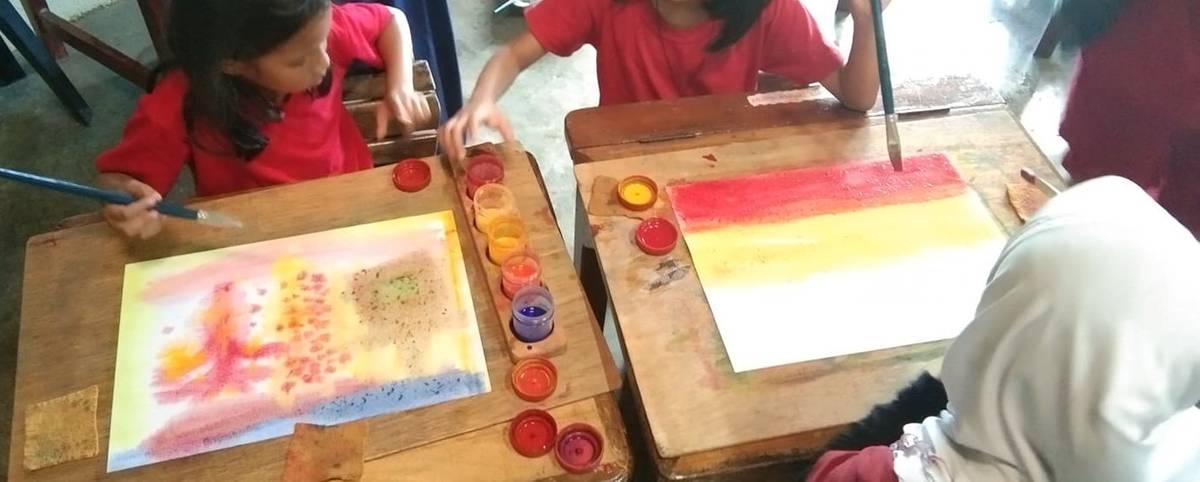
Grade School
Lower and Middle Grades
When children are ready to leave kindergarten and enter first grade, they are eager to explore the whole world of experience for the second time. Before, they identified with it and imitated it; now, at a more conscious level, they are ready to know it again, by means of the imagination—that extraordinary power of human cognition that allows us to “see” a picture, “hear” a story, and “divine” meanings within appearances.
During the elementary school years, the educator’s task is to transform all that the child needs to know about the world into the language of the imagination, a language that is as accurate and as responsible to reality as intellectual analysis is in the adult. The wealth of an earlier, less intellectual age—folk tales, legends, and mythologies, which speak truth in parables and pictures—becomes the teacher’s inexhaustible treasure house. When seen through the lens of the imagination, nature, the world of numbers, mathematics, geometrical form, and the practical work of the world are food and drink to the soul of the child. The four arithmetical operations can, for instance, be introduced as characters in a drama to be acted out with temperamental gusto by first graders. Whatever speaks to the imagination and is truly felt stirs and activates the feelings and is remembered and learned. The elementary years are the time for educating the “feeling intelligence.” It is only after the physiological second great developmental phase, that imaginative learning undergoes a metamorphosis to emerge as the rational, abstract power of the intellect.
In Gamot Cogon Waldorf School, this phase of learning, approximately from seven to fourteen years of age, comprises the grade school—lower and middle grades or grade one to grade eight.
In the Classroom
How is Steiner’s theory reflected in the classroom? The school day begins with a long, uninterrupted lesson. One subject is the focus, the class deals with it in-depth each morning for several weeks at a time. Whether the subject may be science, language arts, arithmetic, history or geography, this long main lesson—which may well run for two hours—allows the teacher to develop a wide variety of activities to support the subject at hand. In the younger grades lively rhythmic activities get the circulation going and bring children together as a group; they recite poems connected with the main lesson, practice tongue twisters to limber up speech, and work with concentration exercises using body movements.
After the day’s lesson, which includes review of earlier learning, students record what they learned in their notebooks. Following recess, teachers present shorter run-through” or special subject lessons sometimes with a strongly recitational character. Afternoons are often devoted to lessons in which the whole child is active; movement and games, handwork, art, or gardening, for example. Thus the day has a rhythm that helps overcome fatigue and enhances balanced learning.
Class teachers continue with the same class from one year to the next, ideally right through elementary school, but at least for a period of several years. With rare exceptions these teachers lead the main lesson at the beginning of each day. Other teachers may handle special subjects, but the class teachers provide the continuity so often lacking in our disjointed world today. The class teacher and the children get to know each other very well and it is this teacher who becomes the school’s closest link with the parents of that class. When problems arise, the strong child/teacher/parent bond helps all involved work things through instead of handing the problem on to someone else.
This experience of class community is both challenging and deeply rewarding to teachers. Having to prepare new subject matter as their students get older from year to year is a guarantee against going stale. Children begin to see that a human being can strive for a unity of knowledge and experience.
__________________________________
(The above is adapted from an article by Henry Barnes, Chairman of the Board of the Association of Waldorf Schools of North America, which originally appeared in the October, 1991 issue of Educational Leadership Magazine.)
